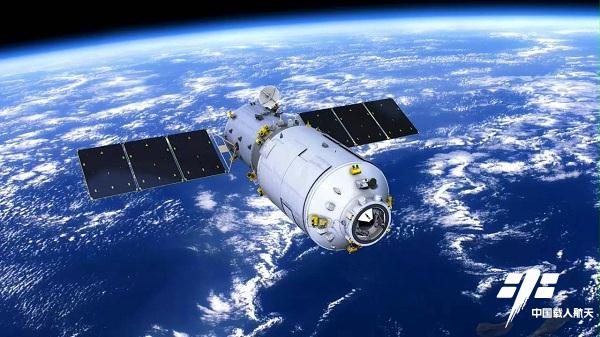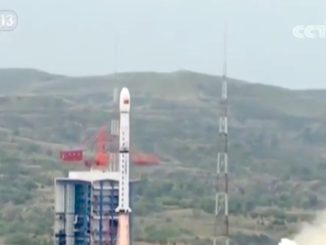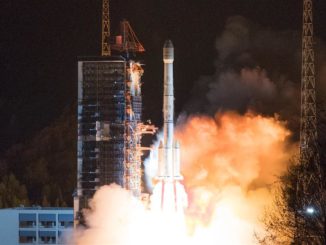
The Chinese Tianzhou 1 resupply and refueling freighter re-entered Earth’s atmosphere Friday, burning up as designed after a five-month mission demonstrating servicing techniques for China’s future space station.
The nearly 35-foot-long (10.6-meter) robotic cargo carrier fired its thrusters two times to slow down and drop out of orbit, according to China’s state-run Xinhua news agency.
The ground-commanded deorbit burns guided the Tianzhou 1 spacecraft into the atmosphere over the Pacific Ocean at around 1000 GMT (6 a.m. EDT; 6 p.m. Beijing time) Friday, Chinese space officials said.
Tianzhou 1 is the first in a series of vessels designed to deliver cargo, food, clothing, water and fuel to crews on China’s future space station, an orbiting complex scheduled for completion by around 2022.
The demonstration mission conducted three dockings with China’s Tiangong 2 space lab, a precursor of the planned space station, and successfully transferred liquid fuel and oxidizer into Tiangong 2’s propellant tank three times.
Tianzhou 1 undocked from Tiangong 2 for the final time Sept. 16.
Since its launch April 20 on a Long March 7 rocket, Tianzhou 1 tested technologies and servicing procedures China says will be required on the future space station.
Designed to accommodate up to 14,300 pounds (6,500 kilograms) of payloads, the Tianzhou spacecraft is similar in purpose to cargo freighters that fly to the International Space Station, such as the Russian Progress supply ship and the commercial Cygnus and Dragon carriers built by Orbital ATK and SpaceX.
Tianzhou means “heavenly vessel” in Chinese.
In design and capability, the Tianzhou is most like Russia’s Progress and Europe’s now-retired Automated Transfer Vehicle, which carried dry goods, water and propellant to the orbiting outpost. The U.S. commercial supply ships and Japan’s HTV logistics vessel cannot refuel the space station.
While no crews were present during Tianzhou 1’s mission, the freighter hosted several automated experiments.
Two Chinese astronauts on the Shenzhou 11 mission lived aboard the Tiangong 2 space lab for one month late last year, the longest crewed spaceflight to date by China’s space program.
No more Chinese crews are planned to visit Tiangong 2. The next Shenzhou mission will launch astronauts to the Tianhe 1 module, the command section of China’s planned space station set for launch in 2019.
The Tianhe 1 module will be joined by China’s second supply ship, named Tianzhou 2, for a cargo delivery before the first astronaut crew visits the orbiting facility aboard the Shenzhou 12 spacecraft.
Two more modules will be added to the space station by 2022, completing assembly of a complex that is expected to have a mass of more than 60 metric tons, about one-seventh that of the International Space Station, and comparable to the mass of NASA’s Skylab station in the 1970s.
Email the author.
Follow Stephen Clark on Twitter: @StephenClark1.



